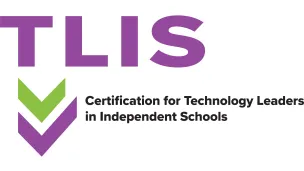As seasoned technology leaders approach retirement and the industry continues its rapid evolution, succession planning in independent schools has emerged as a critical priority. ATLIS convened a panel of experts to explore the importance of planning for leadership transitions, ensuring institutional knowledge continuity and equipping the next generation of leaders to thrive in an increasingly complex environment.
Case for Succession Planning
“Educating kids at school is the most important thing we do, operationally,” said Larry Kahn, a technology leader who recently retired. “Being ready for whatever happens is essential. If you’re not thinking about succession planning, you’re doing it wrong.”
Succession planning is about more than filling positions; it’s about continuity and resilience. Whether a gap is caused by a planned retirement, an unexpected departure, or a sudden crisis, schools need to ensure key operations continue seamlessly.
“It’s like having a backup plan for technology in a classroom,” explained Bradley Lands, TLIS, chief technology officer at The Langley School in McLean, Virginia. “You need a contingency plan that ensures uninterrupted operations, whether it’s due to technology failure or the absence of a key team member.”
Building the Next Generation of Leaders
As many tech directors prepare for retirement, the focus turns to nurturing future leaders. The consensus? Leadership qualities and soft skills matter as much as technical expertise.
“New leaders often want to make sweeping changes right away,” said Thanasi Letras, director of IT at the Bryn Mawr School in Baltimore. “The real skill is empathy — sitting back, observing, and valuing the experiences of the current team before making changes.”
Kahn echoed the importance of personal compatibility in leadership roles. “You want someone who’s ready to step up but in all the right ways. They should be a good communicator, a relationship builder, and someone people want to work with.”
Credentials such as the ATLIS Technology Leader in Independent Schools (TLIS) certification offer an excellent pathway for aspiring leaders to refine and convey these skills. “You can train someone on technology systems, but leadership qualities like communication and relationship-building are invaluable,” added Lands.
Preserving Institutional Knowledge
The loss of institutional knowledge is a major risk during leadership transitions, especially in situations where a long-serving tech leader is moving on. To address this, schools must proactively document critical processes and ensure knowledge is shared among team members. Essential tools include shared drives, password managers, and detailed documentation.
“At our school, we use shared Google Drives for important documentation,” said Lands. “And we’ve created generic admin accounts with multiuser access to critical systems. This ensures continuity during transitions.”
Letras highlighted an innovative practice. “We use a Google Voice number for multifactor authentication on shared accounts. This ensures access continuity, even if a team member is unavailable.”
For schools with larger teams, cross-training is vital. “Each team member should have a backup who understands their role well enough to step in if needed,” suggested Kahn. “Even if it’s just knowing how to call a vendor for support, that redundancy is critical.”
The ATLIS360 Companion Manual also includes resources for creating and maintaining repositories of essential information, from hardware inventories to incident response plans.
“The ATLIS360 Companion Manual has become a cornerstone for schools aiming to align their disaster recovery and succession plans,” shared Letras. “It’s not just a resource; it’s a road map for stability and resilience.”
Tools and Templates for Effective Succession Planning
Schools often rely on a combination of tools, templates, and processes to ensure smooth leadership transitions. “The ATLIS360 Companion Manual was an invaluable resource for us,” said Kahn.
“We used that, as well,” interjected Lands. “It provided clear guidance on disaster recovery and incident response, helping us cover critical areas. We also found National Business Officers Association resources on business continuity planning particularly useful.”
Letras highlighted the value of simplicity. “We tried complex project management tools but found a shared Google Doc or spreadsheet with high-level milestones and annual tasks worked best for our team. It kept us organized without adding unnecessary complexity.”
Lands emphasized the importance of visualization. “Creating a data flow chart and mapping out our network were gamechangers. These tools ensured we understood how systems interconnected, which was critical for continuity during transitions.”
Mentorship and Professional Development
The panelists agreed on the importance of mentorship and ongoing professional development in succession planning. “Professional development isn’t just about technical skills,” said Kahn. “It’s about preparing people to think strategically, communicate effectively, and lead confidently.”
Cross-training within teams ensures institutional knowledge is distributed. “We maintain a high-level checklist of annual tasks,” said Letras. “This helps everyone stay familiar with recurring responsibilities and prevents knowledge from becoming siloed.”
“Additionally,” Letras continued, “our local managed service provider has been a trusted partner for over 20 years. They understand our environment, school culture, and philosophy, which makes collaboration seamless, even when working with different technicians. Beyond technical support, they’ve been an incredible source of professional development. Whenever we start a new infrastructure project, we rely on their expertise while also learning alongside them, which has been invaluable for our team’s growth.”
Sometimes, it’s better to redesign the role than to replicate the old one. Aligning the structure with current and future needs sets the stage for long-term success.
Bradley Lands, TLIS, The Langley School
Reimagining Leadership Roles
When a key technology leader departs, it’s an opportunity to rethink the role itself. At The Langley School, a sudden retirement led to a comprehensive restructuring of the technology department.
“We worked with Education Collaborators to assess our needs,” explained Lands.
“They acted as interim director while we restructured. We ended up creating a [chief technology officer] position (my role) and adding a director of data services, both to address gaps and create a unified hierarchy to streamline decision-making between IT and academics.”
This approach underscores the importance of flexibility. “Sometimes, it’s better to redesign the role than to replicate the old one,” Lands noted. “Aligning the structure with current and future needs sets the stage for long-term success.”
Future of Technology Leadership
Looking ahead, the role of technology leaders will continue to evolve, shaped by emerging trends such as AI, cybersecurity, and personalized learning.
“AI presents both opportunities and challenges,” said Kahn. “On the one hand, it will revolutionize personalized learning. I anticipate future customized curriculums tailored by AI for each individual learner. On the other, AI introduces complex cybersecurity risks.”
Letras anticipates a shift in the role of tech leaders. “We’ll become gatekeepers, helping schools navigate the flood of new tools and technologies while safeguarding privacy and data security,” he said. “In the early days, new stuff was coming out all the time, and we were trying to bring it to our people and say, ‘Hey, this is great. You could do this in your classroom.’ Now, we’re trying to be the filter for all the things our community finds. We’re already going through this as an industry, but I anticipate even more of an emphasis in the future.”
Lands predicted a growing focus on wellness and technology’s impact on students. “Student wellness and health in relation to technology will remain a critical issue. Schools need to focus on managing its impact, providing support for students, and equipping families with the tools they need to foster a healthy balance at home as technology continues to evolve.”
Looking Ahead
Succession planning in independent school technology leadership is not just about finding replacements; it’s about building capacity, preserving knowledge, and preparing for the future. Whether through mentoring, reimagining roles, or leveraging tools for continuity, schools can ensure smooth transitions and resilience in an ever-changing landscape.
As Kahn put it, “Success lies in planning, not just for the next leader, but for the long-term health and stability of the school’s technology ecosystem.”




